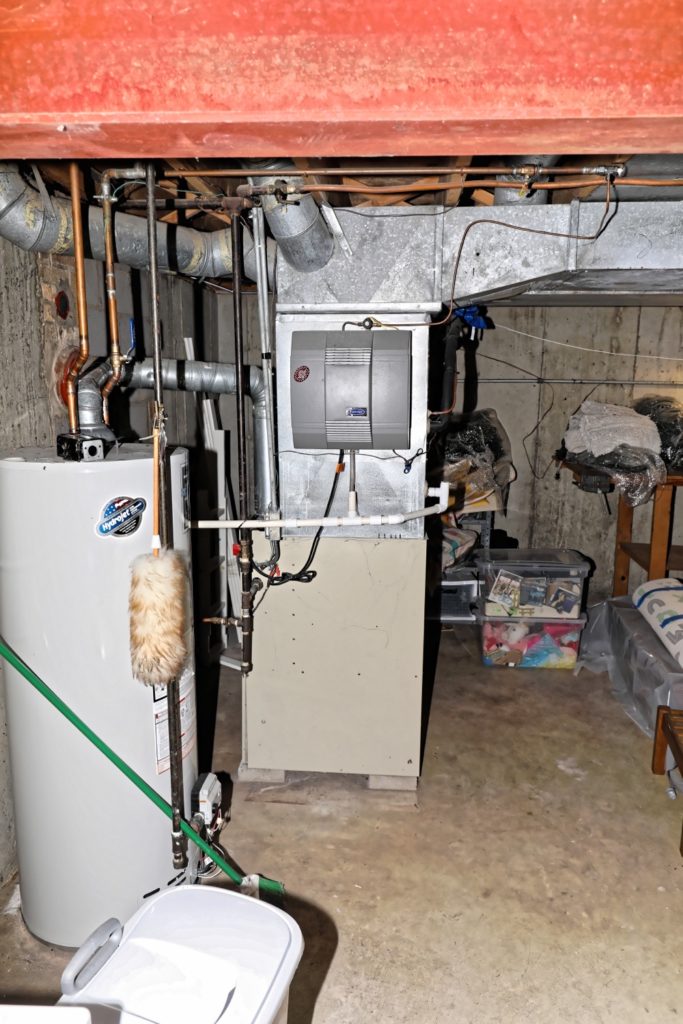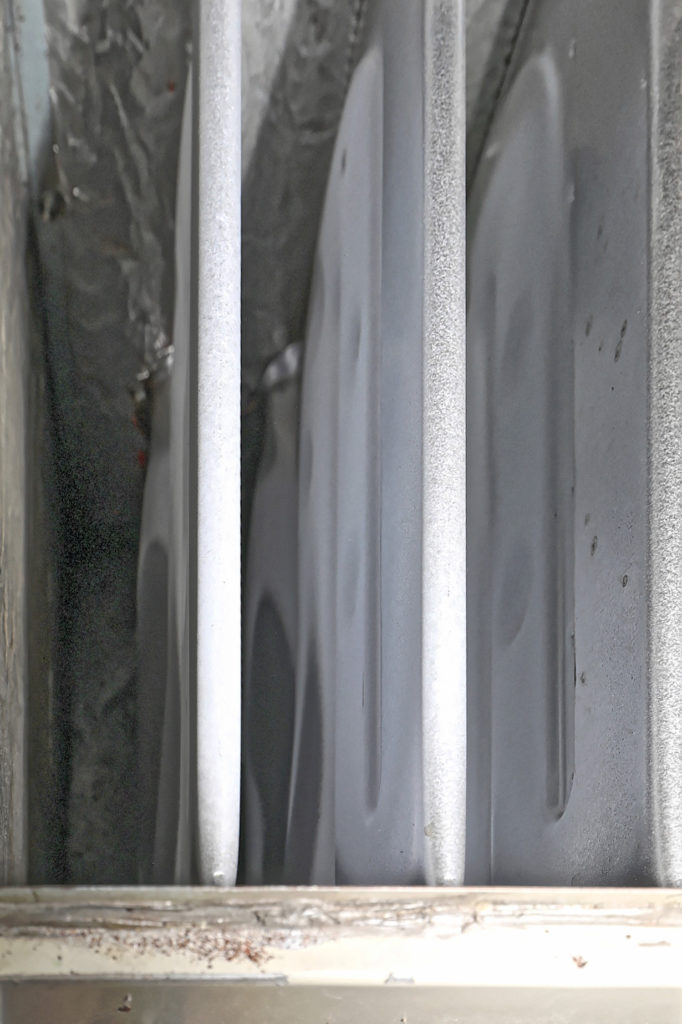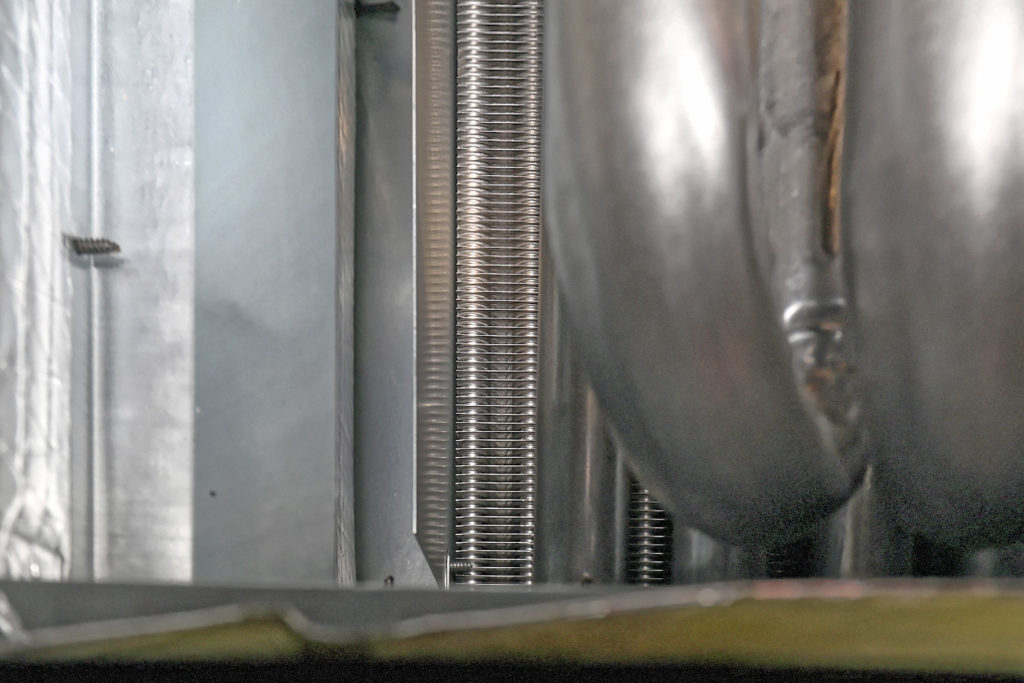I am replacing an HVAC system in an older home (1970s). Although the new furnace looks similar to the old one it has features that make it more efficient.
The old furnace was 80% efficient. This means that 80% of the heat contained in the natural gas that it used was transfer to the home. This also means that 20% of the heat was lost up the chimney.
The new furnace is 96% efficient. Only 4% of the heat energy is lost. Furnaces have become more efficient by incorporating several design changes, most notably a secondary heat exchange.
On the combustion side air is heated and blown threw a baffle system (heat exchange). This system often has bumps on the outside to slow the air passing on the outside to allow it to heat. This is the air that is circulated into the home.
More efficient furnaces use a secondary heat exchange which captures the heated air after the first exchange (baffle). This allows more heat extraction and better efficiency. The exhaust can now be vented via a PVC pipe on the side of the house, instead of up a chimney.
Newer high efficiency furnaces require different air intakes and venting which potentially allows you to remove your chimney stack. In the long run you will save on your fuel bills, and you will be burning less fossil fuel.


